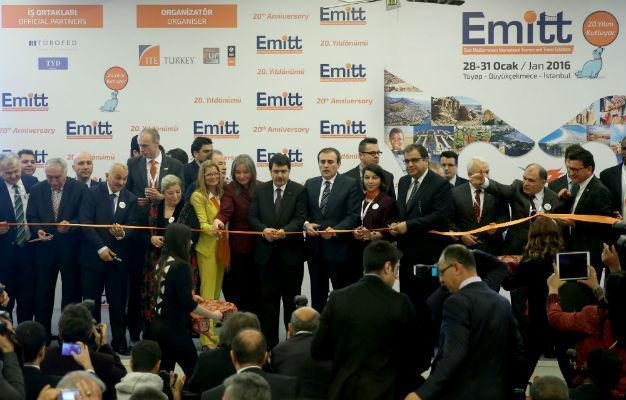Turkey saw sharp drop in visitors from Russia, Europe in 2015
ANKARA / ISTANBUL

AA Photo
Turkey saw a dramatic decline in the number of foreign visitors from Europe and Russia in 2015, though the total number of foreign arrivals saw only a slight drop of around 1.61 percent compared to 2014, according to data released by the Tourism Ministry on Jan. 28.A total of 36.2 million foreign people visited the country in 2015, according to the data.
The number of Russian visitors to Turkey decreased to 3.65 million in 2015 from around 4.5 million in 2014, amid Russia’s economic troubles. The decline accelerated after the diplomatic crisis between Russia and Turkey erupted on Nov. 24, 2015, with the number of Russian tourists visiting Turkey decreasing by around 46.9 percent to 25,485 in December 2015 compared to the same month of 2014.
Overall, foreign arrivals declined by around 7.3 percent to 1.46 million in December 2015 compared to the same month of 2014.
Despite the drop, the Russian market remained the second largest source of foreign arrivals for Turkey, with over 10 percent of the total. The number one source of arrivals was Germany, which took around 15.5 percent of the total with around 5.6 million visitors, while the U.K. was the third top source of foreign arrivals to Turkey, with a share of around 7 percent of the total.
The number of European tourists visiting Turkey fell in 2015. The number of Italian tourists decreased by 27 percent and the number of French tourists fell by 18 percent in 2015 compared to the previous year. The number of arrivals from Japan also declined by around 40 percent.
According to sector representatives, escalating security concerns played a big role in explaining the drop in visitors from Europe.
‘Healing effect’
“The world is now facing the problem of terror and all countries should act together against terror. Our sector is quite experienced in crisis management and problem solving. We can host around 2.5 million refugees, maintain security in our tourism destinations … and offer state support to the sector,” said Turkish Tourism Minister Mahir Ünal at the opening of the East Mediterranean International Tourısm and Travel (EMITT) Fair in Istanbul on Jan. 28.
Ünal suggested that tourism has a “healing effect” on international conflicts.
He also underlined Turkey’s aim of reaching 50 million tourists annually by 2023. “It is of great importance for us to achieve diversification in the sector … We need to prevent any negative factor that damages Turkey’s safe and secure country image,” he said.
The number of arrivals from the Middle East and the Gulf increased sharply in 2015 compared to the previous year, although the figures were still much lower compared to the arrivals from Europe.
The number of arrivals from Saudi Arabia rose by 31 percent to around 450,000 in 2015 compared to 2014. Arrivals from Bahrain also saw an increase of 34 percent to around 32,500 in the same period.
There was also a sharp increase in arrivals from China, with the number of Chinese visitors increasing by 57 percent to over 313,000 in 2015 compared to the previous year. An increase of 20 percent was also seen in the Israeli market, with around 224,500 arrivals from Israel in 2015 compared to 2014.
Tourism revenue is very important for Turkey, accounting for around 4.5 percent of the country’s $800-billion economy and playing a crucial role in closing its multi-billion-dollar current account gap.
















